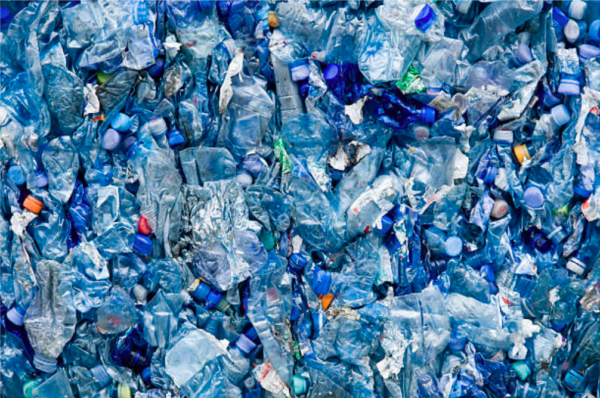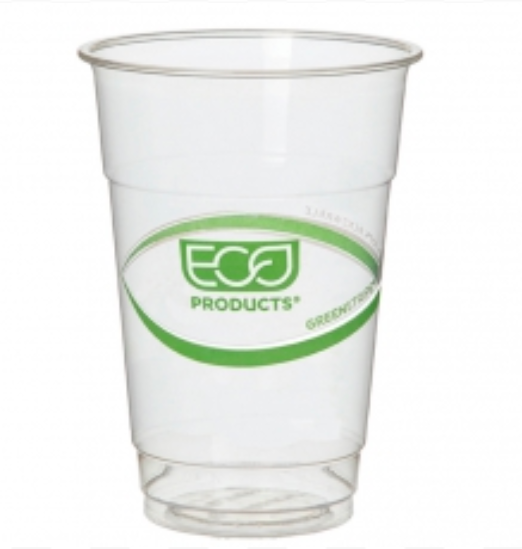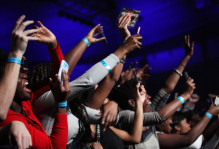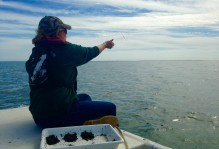Finding Alternatives to Single-Use plastics: A Major Step for Sustainability at William & Mary
By Grace Phillips ‘23
A huge contributor to climate change, pollution, and environmental degradation is something that many people use each day — plastics. Humans use plastic products in a variety of ways: from hygiene products, to food and drink packaging, to cutlery, to plastic bags at the grocery store. Plastic is convenient to use and readily available, but many individuals don’t consider the impact that non-biodegradable plastics can have on the planet when used in masses. In Virginia alone, about 23 million tons of solid waste enter Virginia landfills annually. A large portion of this waste comes from single-use plastics that are discarded (not recycled) and left to sit in landfills, releasing harmful chemicals into our atmospheres.

Single-use plastics make up a large portion of the 23 million tons of waste that enter Virginia landfills each year.
In March of 2021, Virginia Governor Ralph Northam issued Executive Order 77 (EO77), a law meant to reduce the state’s dependence on single-use plastics. The overarching, environmental goal of this plan is to significantly downgrade the amount of single-use plastics that are entering Virginia landfills, polluting our state’s land, water, and air. Executive Order 77 lays out a plan for Virginia government agencies and universities to phase out the use of disposable plastics. This plan is meant to happen in three stages, beginning with the discontinuation of inessential single-use plastics starting in July of 2021, including food take-out containers, disposable plastic bags, and plastic straws, and resulting in a complete phase-out of all other commercial single-use plastics by 2025. This is where my project came into play. The goal of the “Alternatives to Single-Use Plastics” Sustainability Ambassador project was to find sustainable options for disposable plastic products at William & Mary. This project is essential to eliminating 25% of the university’s purchase and use of non-essential single use-plastics by December 31 of 2022.
To aid in the university’s path to follow Phase I of EO77 by July, I developed a spreadsheet listing up to five sustainable alternatives for each single-use plastic product that is used on campus. This spreadsheet includes information regarding where

Over 100 alternatives to single-use plastics were found, compiled into one spreadsheet (including location of purchase and pricing information), and then sorted based on functional category.
the alternative products would be purchased from, as well as pricing information to make sure that each alternative is both environmentally and economically sustainable for the school. I then developed a presentation for the W&M Procurement Services Office outlining the goals and outcomes of this project, to give the office’s staff members the information needed to make more sustainable purchases on behalf of William & Mary.
At William & Mary, we are able to compost food, paper products, and anything that is labeled “greenware” or “compostable.” We are also able to recycle plastics #1-7, aluminum cans, glass bottles, steel/tin cans, paper, and clean cardboard. A large portion of this project was dedicated to finding alternatives to disposable plastics that fit within the parameters of William & Mary’s composting and recycling programs, in addition to products that supported our partnerships with other businesses, including TK Promotions and ID America. Two major suppliers for William & Mary include The Supply Room Company and Amazon. In order to find alternatives to single-use plastics for this project, I searched for biodegradable, compostable, reusable, and/or recyclable alternatives on The Supply Room Company and Amazon’s websites. I then sifted through these options to make sure that they fit within the parameters of our composting and recycling programs, and to be sure that they fit within the preferred sustainability certifications of the school. These selections were compiled into a spreadsheet and then sorted and grouped based on the category of use (e.g. kitchen and dining, promotional items, and office supplies). Alternatives to single-use plastics that were found from The Supply Room Company were put into an “eco-friendly” tab on the website, to allow William & Mary purchasers to filter for products that are either biodegradable, reusable, or recyclable. Likewise, alternatives found on Amazon were categorized into a list on the Procurement Services Office website for suggestions of environmentally-friendly products to purchase, which will go live soon.
Over 100 alternatives to single-use plastics were found. Alternatives were found in categories such as kitchen and dining, promotional items, cleaning products, office supplies, fencing, and party supplies. These products ranged from recyclable options, such as honeycomb cushioned packaging paper and sandwich bags, to biodegradable options, such as utensils, plates, and garbage can liners, made of plant-based materials like PLA, to reusable products, such as portable fencing and mop supplies.
As a student who is passionate about sustainability, I found this project to be exciting, encouraging, and invigorating. While I try to make daily choices that will have a positive reduction impact on my own carbon footprint, I was encouraged to find so many new alternatives to plastic products that I had not considered before, or did not even know existed. Not only have I learned new ways to incorporate sustainability and environmentalism into my own lifestyle, I have also had the opportunity to impact the environmental awareness of the greater community around me. Being able to work on a project that has such direct effects on the sustainability and environmental impact of my own university was additionally fulfilling; it is not often that students can have such a tangible impact on their school and community’s natural environment. I feel grateful to have been a part of this Sustainability Ambassadorship project and am excited to see how its results will guide William & Mary to a greener future.
The “Alternatives to Single-Use Plastics” project is a starting point to the reduction of single-use plastics. Without community support and engagement, this project may just be a list of sustainable alternatives to disposable plastics — it is up to the people around us and William & Mary to implement sustainable changes that will truly make a difference on campus. Promoting the discontinuation of single-use plastics among the faculty, staff, and student body at William & Mary will encourage the spread of support within our university’s community to use more biodegradable, recyclable, and reusable products on campus. With the alternatives discovered throughout this project, combined with educational outreach and composting expansion, William & Mary will continue to make huge leaps to becoming a more sustainable and environmentally conscious campus community.





No comments.
Comments are currently closed. Comments are closed on all posts older than one year, and for those in our archive.